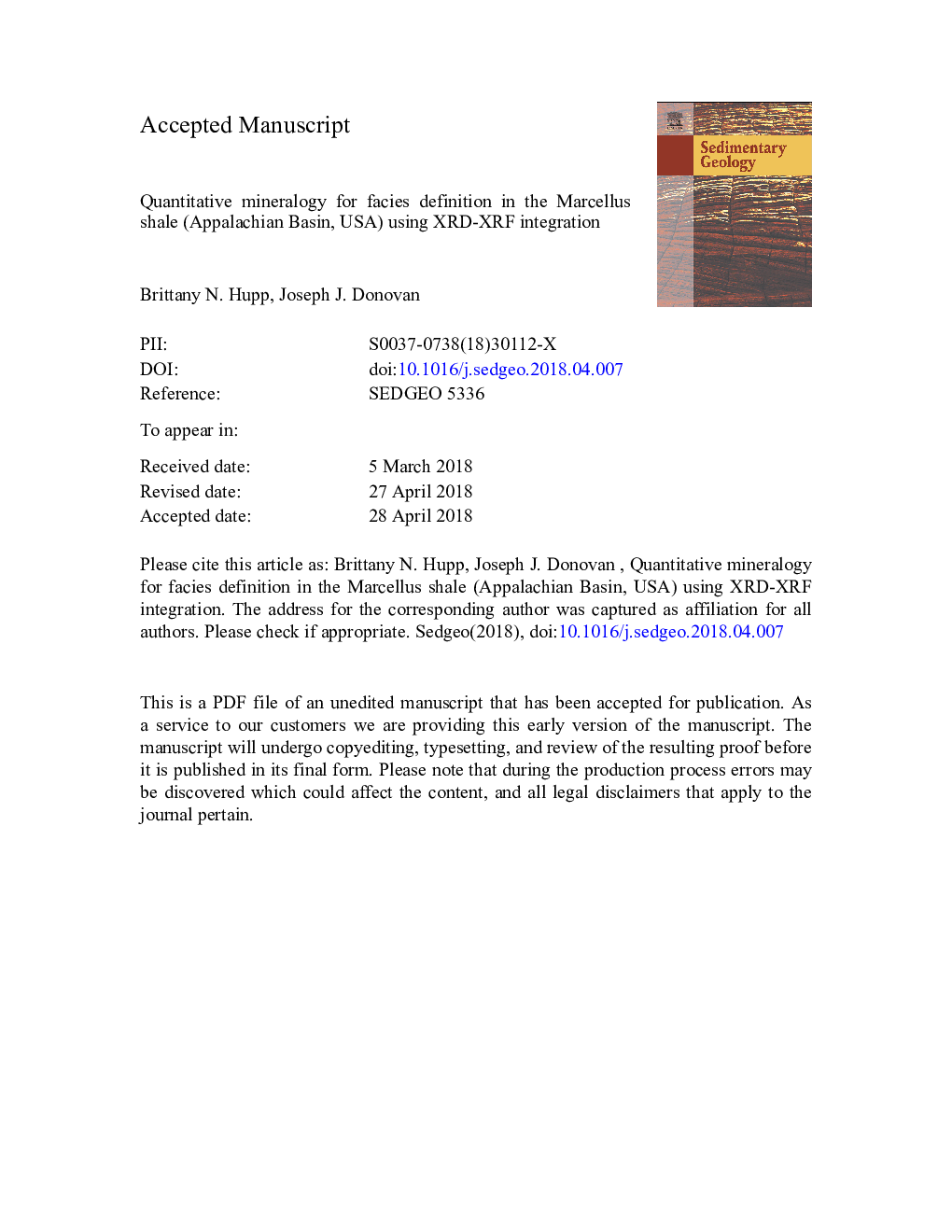| Article ID | Journal | Published Year | Pages | File Type |
|---|---|---|---|---|
| 8908494 | Sedimentary Geology | 2018 | 56 Pages |
Abstract
Determining the mineralogy of mature sedimentary rocks, particularly mudrock, often defaults to qualitative or semi-quantitative methods due to difficulties in correctly quantifying multiple unknown mineral phases. Constraining mineral abundances is particularly difficult in shale due to preferred mounting orientation of common phyllosilicate phases, commonly leading to overestimation of clay minerals and mica. We introduce a quantitative approach to constraining mineralogy within mudrock by integrating x-ray diffraction (XRD) and x-ray fluorescence (XRF) data sets collected on splits of the same samples. The technique involves partitioning XRF cation concentrations into XRD-identified silicate, carbonate, and sulfide phases, then estimating quartz by XRF SiO2 balance. This method is applied to an example dataset from the economically significant Marcellus Shale (Middle Devonian, Appalachian Basin, USA). Conventional reference-intensity ratio (RIR) interpretation identified nine mineral phases (quartz, muscovite, illite, pyrite, chlorite, albite, calcite, dolomite, and barite). Their abundances were then re-estimated using more highly accurate XRF-derived elemental concentrations with stoichiometry from the identified XRD reference phases. XRF Al2O3 was used to corroborate the calculated XRD-XRF results for quality control. Errors in relevant XRF concentrations can be quantified, though not the assumptions in how they are employed; nonetheless, the resulting XRD-XRF mineralogic abundances by this procedure are thought to be more accurate than RIR and to remove preferred-orientation bias induced that causes overestimation of clay minerals and mica and underestimation of quartz and other phases. Cluster analysis of the XRD-XRF results identified four mineralogical facies that provide insight into potential primary depositional controls on organic-matter preservation within the Marcellus Shale. This XRD-XRF integration method provides a general framework for estimating mineralogy quantitatively in mudrocks, although dataset-specific adjustments to the method may be required for different mineralogical suites.
Related Topics
Physical Sciences and Engineering
Earth and Planetary Sciences
Earth-Surface Processes
Authors
Brittany N. Hupp, Joseph J. Donovan,
